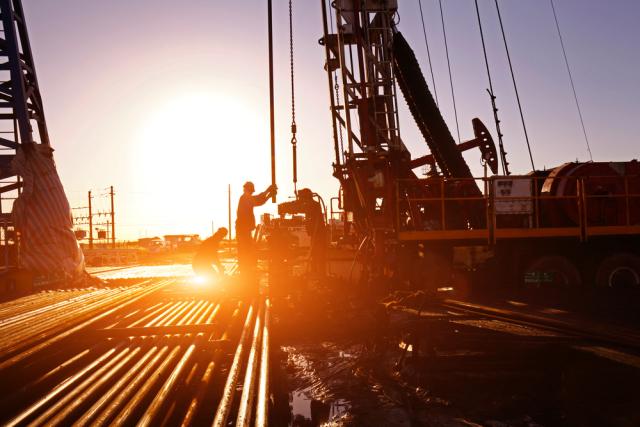
Investors are concerned with the oilfield services supply/demand balance. (Source: Pan Demin/Shutterstock.com)
-
Energy investors are unclear on the pace of 2019 activity.
-
Investors are concerned with the oilfield services supply/demand balance.
Talk to investors lately about oilfield services? Their No. 1 question concerns what will happen in the second half of 2019. With the first quarter in the history books, the fact that industry observers have a hazy view is telling. Much of that is related to commodity price, to be sure. But a significant influence is the Wall Street mandate to E&P companies about living within cash flow, generating a profit and sharing that profit with shareholders/investors.
Investors are worried E&P companies are front-end loading projects as part of 2019 capital spending, and a sizeable volume of those projects will be directed to a reduction in drilled but uncompleted wells (DUCs), especially in the Permian Basin. As the DUC inventory declines, so will demand for well stimulation.
That is just another way of pointing to the chronic uncertainty evident in current trends for oilfield services.
There are several ongoing themes, particularly on the well stimulation side. Short on Northern white sand? Blame flooding in the upper Midwest on top of cold winter weather. The latter keeps premium sand providers from operating mines. The former makes it difficult to transport bulk proppant via barge to customers in the southern oil fields where the availability of 40/70 proppant is becoming an issue.
Excess stimulation capacity still plagues the industry. However, a significant tranche of excess capacity stems from greater efficiency on the job site. Several E&P companies and multiple well stimulation firms have reported at recent industry conferences that stage count is up about 35% currently versus the same time last year. In many cases, the stage count is approaching 9 to 10 stages daily. Those are remarkable numbers when considering it still takes about two hours to do a stage. The change stems from more wells drilled on pads and the reduction in mobilization time between wells.
Additionally, well stimulation firms have improved ancillary processes thanks to enhancements such as subsurface automation, better performance at the stage level and greater experience among stimulation crews. As for excess pumping capacity, equipment is running harder for longer, and there is a natural and accelerating rationalization process underway that will address the supply side of well stimulation equipment.
The trend among E&P companies to self-source sand appears to be topping out at about 20% of the sand market. E&P companies are exceptional at finding oil and gas. The manpower and supply chain requirements associated with field work makes it difficult for all but the very largest E&P companies to operate successfully on the procurement side.
Word is, established stimulation firms view electric fleets as a niche opportunity. The rationale is that it is possible to find mechanics locally that can work on the existing fleet. When it comes to turbines, support personnel has to be flown in to the job site because there are so few out there. The way the issue is handled for mechanical fleets involves having excessive hydraulic horsepower on site so that if a crucial piece of equipment goes south, it can be pulled out of line and replaced simultaneously with existing inventory. The niche most amenable for electric stimulation fleets is found in full field development programs where equipment is employed on pads in a tight geographical footprint.
At a broader level, questions on the equipment supply and demand balance reflect a change in world view on behalf of the investor class. Few investors are interested in waiting 30 years to realize an energy investment based on higher EURs fully. Rather, the view on Wall Street is that the oil and gas industry is a decade or two from peak demand. If investors are going to provide money to energy, they want the return now as dividends or share buybacks rather than waiting a half decade or more for returns in an uncertain future.
Recommended Reading
US Drillers Cut Oil, Gas Rigs for Fifth Week in Six, Baker Hughes Says
2024-09-20 - U.S. energy firms this week resumed cutting the number of oil and natural gas rigs after adding rigs last week.
E&P Highlights: Oct. 14, 2024
2024-10-14 - Here’s a roundup of the latest E&P headlines, including another delay at one of the largest gas fields in the world and two major contracts in West Africa.
EY: How AI Can Transform Subsurface Operations
2024-10-10 - The inherent complexity of subsurface data and the need to make swift decisions demands a tailored approach.
Kolibri Global Drills First Three SCOOP Wells in Tishomingo Field
2024-09-18 - Kolibri Global Energy reported drilling the three wells in an average 14 days, beating its estimated 20-day drilling schedule.
Baker Hughes to Supply Petrobras' Presalt Fields with Flexible Pipe Systems
2024-10-28 - Baker Hughes said the systems will look to address the issue of corrosion cracking from CO2, which can arise as gas is reinjected into wells.
Comments
Add new comment
This conversation is moderated according to Hart Energy community rules. Please read the rules before joining the discussion. If you’re experiencing any technical problems, please contact our customer care team.




